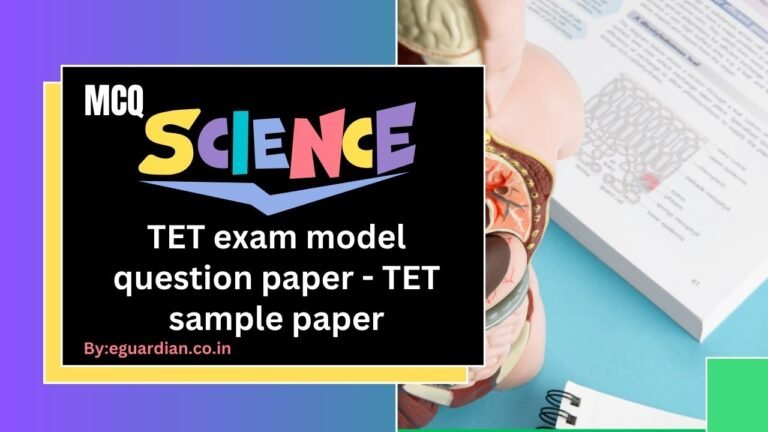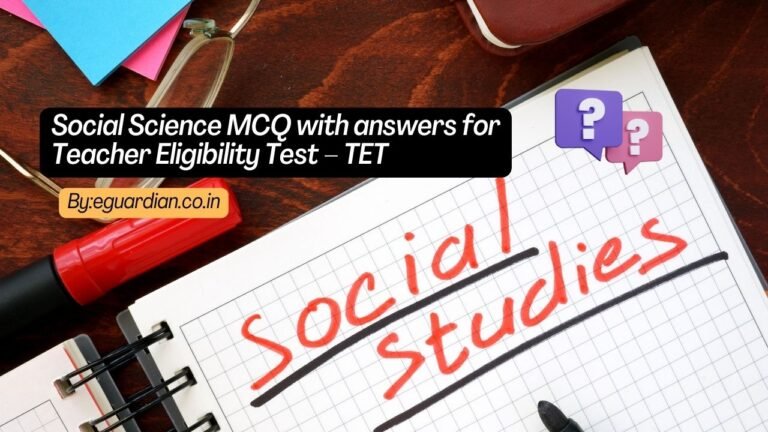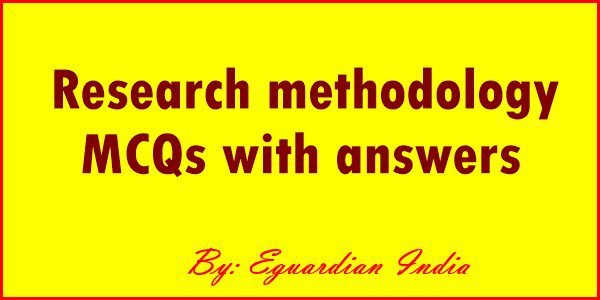Maintenance Management MCQ Multiple Choice Questions with Answers
Are you looking for a way to manage your maintenance responsibilities more effectively? Do you feel like you are constantly learning new things and never have enough time to keep up with the ever-changing maintenance landscape? If so, take our Maintenance Management 70 MCQ quiz and see how well you score.
In this quiz, you will be tested on your knowledge of maintenance management. Take the quiz to see how well you have learned. Answers are at the end of each question.
Maintenance Management MCQ Multiple Choice Questions with Answers for Students Who Are Preparing for MBA, BBA Distance, & Regular Courses.
Brief Introduction to Maintenance Management
When it comes to keeping a facility running smoothly and efficiently, the maintenance department is a key player. But what exactly is maintenance management? In short, it’s a system that ensures facilities are properly maintained and operated.
Maintenance management encompasses everything from scheduling repairs and replacements to tracking progress and performance. It’s an important part of any organization, small or large, public or private.
In order for maintenance management to be effective, there must be clear goals established and objectives defined. This way, everyone involved knows what’s expected of them and can track their progress over time.
Communication is also key; everyone needs to be aware of changes affecting the facility so they can take appropriate action. Finally, proper equipment and resources need to be allocated so work can get done quickly and without issue.
Maintenance Management MCQ with Answers
1. ___ is concerned with the direction and pooling of all internal resources to control the availability and performance of the plants and types of machinery at expected levels.
Answer: Maintenance management
2. The ___ machines were programmed for highly reliable production.
Answer: Computer Numerical Control (CNC)
3. The objective of maintenance is linked to the overall organizational objectives of maximizing ___ and hence ___ of the organization.
Answer: The productivity and profitability
4. Sound maintenance management minimizes accidents through proper maintenance of ___.
Answer: All safety devices
5. Maintenance manager is responsible for scheduling maintenance activities? (True/False.)
Answer: True
6. Maintenance planning and ___ are some of the important, modern maintenance management activities.
Answer: Directing execution of maintenance plan
7. Maintenance organization establishes integrated ___ for performing high-quality maintenance activities, which are controlled, measured, and improved upon.
Answer: Maintenance procedures and processes
8. Any maintenance activity requires resources.
Answer: True
9. Maintenance manager, quality manager, all concerned with the resources provisioning, and ___ are the four groups that have to integrate the maintenance dynamics.
Answer: Higher up team
10. Good quality maintenance could contribute significantly to ___.
Answer: Quality assurance
11. Certain key process areas (KPAs) are identified which may enhance the effectiveness and the capability of the ___.
Answer: Maintenance personnel
12. Shut-down maintenance can either be a preventive activity or a corrective activity.
Answer: False
13. Corrective maintenance activities include both emergency repairs (firefighting) and preventive (or corrective) repairs. This system is also called the ___.
Answer: Operate to failure
14. Maintenance activity must be defined and managed as a process in order to achieve maximum payoff. The maintenance management system helps the organization to work within an integral ___ covering all the machinery and equipment.
Answer: Life cycle management model
15. There are three stages in the lifecycle management of any machinery, namely the Acquisition phase, ___, disposal, and replacement phase.
Answer: Maintenance phase
16. A subcontractor’s function does need not to maintain data related to subcontracts.
Answer: False
17. Work order management function is required to plan capacity.
Answer: True
18. Equipment maintenance function includes scheduled preventive maintenance work.
Answer: True
19. Information systems will not validate data entry.
Answer: False
20. Vendor management function needs to maintain vendor information.
Answer: True
21. Equipment/machinery malfunction have a direct impact on factors like ___, production costs, product and service quality, employee safety, and customer satisfaction.
Answer: Production capacity
22. The work management system evolved with a goal to achieve excellence is a deliberate process in which the total scope of work is identified, selected, ___, to keep up and maintain records.
Answer: Planned, scheduled, executed
23. From the following, find the missing functional requirements that have to be evolved and established as a part of the maintenance system and planned accordingly for execution.
a) Maintenance management system
b) Equipment maintenance function.
c) Work order management subsystem.
d) Inventory management subsystem.
e) ______
f) Subcontractor management subsystem.
g) General Information system
Answer: e) Vendor management subsystem
24. Management tools for a successful critique process include ___.
Answer: Worker feedback
25. ___ can be closed and declared complete when defined requirements in the approved work package have been met.
Answer: Close Work
26. Execute work describes the ___ and ___ associated with the actual performance of the work.
Answer: Processes, Tools
27. ___ systems are often put in place to collect work requests.
Answer: Work management
28. The performance measurement in ___ has become one of the key ingredients to achieving operational excellence.
Answer: Maintenance
29. In order to maximize maintenance effectiveness and equipment uptime and minimize losses, organizations want to adopt the best practices in maintenance for which the benchmarking and ___ maintenance methods could be evolved to measure performance.
Answer: Balanced Scorecard
30. For effective control of maintenance, the ___ measurement of performance is essential.
Answer: Annual
31. MTTR depends on how well the maintenance crews are in a position to quickly locate the ___ of the problem and find out remedial measures?
Answer: Root cause
32. Requirements of a good maintenance program are:
a) Good supervision and administration of the maintenance department.
b) Consultation with production for fixing priority schedules of maintenance work.
c) A good lubrication schedule.
d) Clear instruction to maintenance crew regarding maintenance work.
e) _______.
f) Adequate stock of spare parts, recommended by equipment manufacturers.
g) Data, regarding failure and corrective maintenance work carried out earlier.
Answer: e) Keeping proper records of maintenance, service manuals, and handbooks
33. ___ of very basic technical tasks through a set of standard operating procedures will minimize errors and improves the efficiency of the operations.
Answer: Standardization
34. The maintenance costs are the six big losses to the organization and can be classified under.
a) Breakdowns and unplanned shutdown losses
b) Excessive setup, changeovers, and adjustments losses
c) Idling and minor stoppages
d) _______
e) Startup losses
f) Quality defects and their losses
Answer: d) Running at reduced speeds of the machine
35. The gap between the current level of performance and the ___ level of performance is nothing but the improvements required, which have to be achieved within the shortest possible time.
Answer: Desired
36. Records must include the following:
a) Downtime hours arise from both preventive maintenance and breakdowns.
b) Cost implications of downtime.
c) ________.
d) Frequency and nature of failures of key pieces of equipment.
e) Cost of maintenance services.
f) Identification of persons performing the work on all major types of equipment.
Answer: c) Severity
37. Breakdowns can be measured in terms of their frequency and also the ___.
Answer: Frequency
38. ___ measure indicates how often the equipment was not fit for use, whereas the severity measure indicates how long it was unavailable due to breakdown.
Answer: Measuring Availability
39. Measures that capture the attributes pertaining to breakdowns and other maintenance performances are mentioned below. These are:
a) Measuring Mean Time Between Failures (MTBF)
b) Measuring Mean Time To Repair (MTTR)
c) ______.
Answer: c) Measuring Mean Time Between Failures (MTBF)
40. ___ is the expected time of the arrival of a failure.
Answer: Measuring Mean Time To Repair (MTTR)
41. ___ on the other hand is the expected time for restoring the equipment back to working condition.
Answer: Availability
42. The ___ is defined as the fraction of the time the equipment is available for production use.
Answer: time Total Failures of Number
43. Failure rate of the compressor = ___
Answer: Number of Failures
________
Total time
44. MTBF = ___
Answer: Total time
_____________
Number of Failures
45. MTTR = ___
Answer: Repair time
_________
No of repairs
46. Availability = ___
Answer: MTBF
___________
(MTBF + MITR)
47. The effectiveness of maintenance can be evaluated in terms of the ___ and ___.
Answer: Maintenance cost incurred, equipment downtime
48. Maintenance cost index (as a percentage) = ___.
Answer: [((Annual maintenance cost) x 100)/(Cost of Production)]
49. Frequency of breakdowns = ___.
Answer: Number of breakdowns per week
_______________________
Available machine hours per week
50. Downtime index (as a percentage) = ___.
Answer: (Downtime per week) 100
_____________________
Available machine hours per week
51. Available machine-hours = ___.
Answer: [(Weekly working days) x (hours per day) x (Number of machines)]
52. Breakdown Maintenance index = ___.
Answer: (Labour hours spent on breakdown maintenance) x 100
__________________________________
Labor hours spent on all forms of maintenance
53. Labour Cost of Planned Maintenance Index = ___.
Answer: (Labour hours spent on planned maintenance) x 100
______________________________
(Labour hours spent on all machines)
54. Equipment Availability = ___.
Answer: [((Operating Time)/((Operating Time + Maintenance Time))] ]
55. It is mandatory for the ___ to supply the equipment as specified in the purchase order and also ensure that all the documentation asked for is supplied with the equipment.
Answer: OE manufacturer
56. Further specific training needs of both ___ and ___ have to be accomplished to the satisfaction of the customer.
Answer: Production, maintenance staff
57. Scope of supply contracts includes the supply of equipment, ___ of the equipment, supply of documentation, and training of personnel in the maintenance of the equipment.
Answer: Erection and commissioning
58. The equipment catalog is an important requirement for ___.
Answer: Effective maintenance
59. ___ gives us details of the overall specifications and dimensions of the machine and certain salient features.
Answer: Catalogs
60. Manuals are prepared by categorizing into different critical areas and hence separate manuals for each of these ___ of the machine.
Answer: Critical operations
61. Manuals prepared and issued by the manufacturer provide the following information:
a) List of recommended spare parts and the quantity to be stocking
b) _________
c) Basic set of troubleshooting methods
d) Recommendations on the frequency of maintenance
Answer: b) Recommended methods of maintenance
62. A troubleshooting mechanism is a structured approach to identify the ___ of the problem that needs some correction in a maintenance scenario.
Answer: Root cause
63. A fault tree is a ___ of the circuitry that will trace the component failure to a specific portion of the network and help maintenance attend to the problem.
Answer: Network diagram
64. The decisions that are taken from this maintenance policy will be more of an ___ decision rather than the technical one.
Answer: Economic
65. The planned actions by the maintenance manager amount to a reduction in the total maintenance cost, which is nothing but the ___ of the preventive and remedial maintenance costs.
Answer: Sum total
66. For an effective PM program, detailed records need not be maintained for each of the machines.
Answer: False
67. Equipment specifications and checklists are not needed for inspection of Plant Maintenance activities and during early decisions on replacements.
Answer: False
68. Data is also necessary to determine whether or not the maintenance actions in the previous occasion have really enhanced the life of the equipment or whether or not the cost of maintenance exceeded the total savings in losses due to breakdowns.
Answer: True
69. Maintenance department requires reliable data for analyzing and evaluating the problems through statistical methods before initiating the maintenance actions.
Answer: True
70. The amounts of data that are generated in a large factory are always huge and hence computers are generally used to maintain the database for the maintenance department to access whenever required.
Answer: True
Conclusion:
It is evident that proper maintenance management is essential for any business. Through regular maintenance, businesses can save money, improve efficiency, and extend the life of their equipment.
By taking this quiz, you have learned more about the basics of maintenance management. Be sure to put what you have learned into practice to ensure the success of your business. If you like share it on social media and post your answers throughout the comment box.
You may like Quality Control and Quality Assurance MCQ with Answers
Read More MCQs:
- Social Science MCQ
- International Business MCQs
- Inventory Management MCQs
- UPES Marketing Management MCQs
- Maintenance Management MCQs: Set-2
Watch the YouTube Video of MCQ on Maintenance Management






